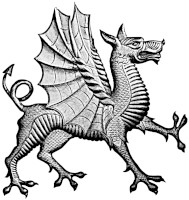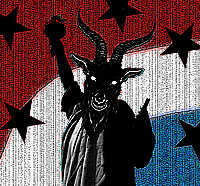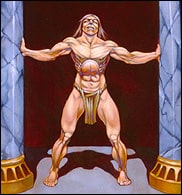“Our lives are a million years too short.”
-Pytheas, from The Boat of a Million Years, by Paul Anderson
Hemavore
For a year now I have been working with Dominick Mattero on the Hemavore serial. The project began with a discussion of why I did not write in the two most popular sci-fi/horror subgenres: vampires and zombies. The young one was taking his elder to task.
I objected that I could not stand any vampire fiction since Anne Rice’s Blood and Gold; that vampire fiction was now just a mishmash of superhero tropes, teenage romance, and soap opera plotting, propped up by various conventions borrowed from Stoker and Rice, etc. I further complained that I knew very little about the conventions of vampirism in fiction, and even if I did, did not want to abide by conventions that were merely fictional tropes assigned to derivative works of fictional works. I simply saw no literary merit in this.
Dominick then revealed himself to be quite a vampire geek and suggested a science-fiction setting a half a millennia into the future, in which a genetically engineered vampire based on Malaysian folk beliefs, might stalk a post-apocalyptic setting as a feral genetic weapon. Dom would design the setting, assign vampire symptoms, powers, etc. I would write most of the characters within those parameters.
Then he threw me a curve, “I want two competing vampire strains; the manufactured one, and the classic Stoker vampire—not Christopher Lee bursting into flames.”
I agreed with some reservations, knowing that I was going to do what I could to undermine the existing tropes. He’s a bright dude. I’m sure he was counting on it. This brings me to the central question of vampires in fiction; not the blood, but the dual tragedy of immortality and mortality.
Immortality Templates
At its core the concept of immortality is a dualistic tragedy with alternatively grim plights casting a pale needful light on their opposites. The rendering of this concept in fiction has traditionally had as much to do with the writer’s level of maturity, or—in our own commercial age where content is driven by purchasing demographics and not literary concerns—the perceived maturity and gender of the readership. These templates amount to three perspectives.
Male
Stoker’s Dracula is the classic example of immortality as imagined by a man built largely on European folklore. The immortal harkens back to a more sinister, but in many ways more worthy, age. The mortal antagonist feels the life-sapping force of his own denatured existence as mirrored in his impotence in the face of the ancient villain. The horrific immortal ironically knows more of, and pines more deeply for, the fleeting existence of the mortal than the pesky modern man, whose woman, denied the company of a vital primitive male, is drawn to the monster over her domesticated mate.
In science-fiction Paul Anderson’s Boat of a Million Years offers a superb rendering of this tragic duality; taking the question down to its bones. What if a handful of people could not die of age or infirmity, but just by misadventure? Those who survived for a few generations would gain great knowledge and ability to survive, and eventually locate one another. What then? What does the future hold for them, living as they do in a world of children, supremely alienated, as much as a Dracula ever would be?
Female
Anne Rice’s Interview With The Vampire and her sequels is the best example of the immortality/mortality dual tragedy from the perspective of the mature woman; a hand-wringing angst and ennui construct that few men have patience for, but has a compelling depth and has a solid adult female following. With Anne Rice’s offering in this field we have two masterpiece level bench marks bracketing the mortal-immortal coexistence question from their respective genders.
Adolescent
What has been offered since is the teenage perspective; which, when one considers the question of immortality, is of great interest. After all, teenagers tend to think themselves immortal until they either get shot, wrapped around a telephone pole, or impregnated.
The best male oriented example of the adolescent viewpoint is Highlander, an entire franchise about how cool it would be to be immortal and romp across time like a silent film star, until eventually one of these perpetual teenage boys would save the world and therefore inherit it.
As with Rice building on Stoker, the adolescent female models build on Highlander and superhero fiction in general, and have, I think, culminated in the ultimate banality of Breaking Dawn, the worst movie I have ever seen; a soap opera about deathly pale sexy immortals removed from all of the potential tragedy of the mortal-immortal duality, living in perpetual upper-class American bliss, as leagues of blood-drinking super heroes—a veritable rainbow coalition of perfect sweater-ready bodies, highlighted by heroic-romantic group walks, and sublime coffee klatches.
With the adolescent view of the tragic duality we have arrived at literary implosion, the point at which Dominick suggested we should begin building a holistic construct, taking all possible aspects of the question into account, even the banal.
Reimagining Immortality
Dracula is a middle-aged man’s idea of immortality; something ancient, something lost.
Interview With The Vampire is a Middle-aged woman’s view of immortality; something imperishable, something terribly unmanageable.
Highlander is a teenage boy’s view of immortality; the coolest weapons still relevant in the most un-cool age.
Breaking Dawn is a teenage girl’s view of immortality; the perfect everlasting marriage, 10,000,000,000 years of monogamy! Are you kidding me girlfriend? Do you have any idea what it is like to be married for even a decade—to the same messed up person? Just ask the parents—you know, the unhappy couple who pay your car insurance and smartphone bills and are existing each in their own rented lair of regret.
It is interesting to note how close the superhero model of immortality comes to the Olympian model of meddling small-case-g gods. We even have a league of 99 Kuwaiti superheroes based on the 99 Koranic aspects of Allah. There must be something here; the fact that our young people, in the fastest changing age that our kind have ever known, are increasingly reaching for the most ancient fantasies entertained by city-living people.
As much as I decry the resulting vapid literature, the fact that superstitions have been resurrected as fantasies, is refreshing. Because baseless savior superstitions are generally, among humans, the first inkling of hope; which does, in the end, lead to rational aspirations, applications, and hopefully accomplishments. Even where questions of mortality and a possible opposite are concerned, I prefer entertaining the fantasies of those who experienced life and death as opposed to those we have been briefly coddled in our safest places. Then again, that is begging those beaten down by years to imagine those who might be ageless.
It’s a big question and I hope to acquit myself with more than one plausible answer before Hemavore is done.











Half the fun of being a writer is in the freedom to create new worlds and characters, but I sometimes feel there are limitations built on tradition. If your creation is fresh and new, have at it, if you're creation is a werewolf or vampire, you may have wiggle room, but for God's sake, don't let your vampires sparkle in the sun!!!
Amen Sister.